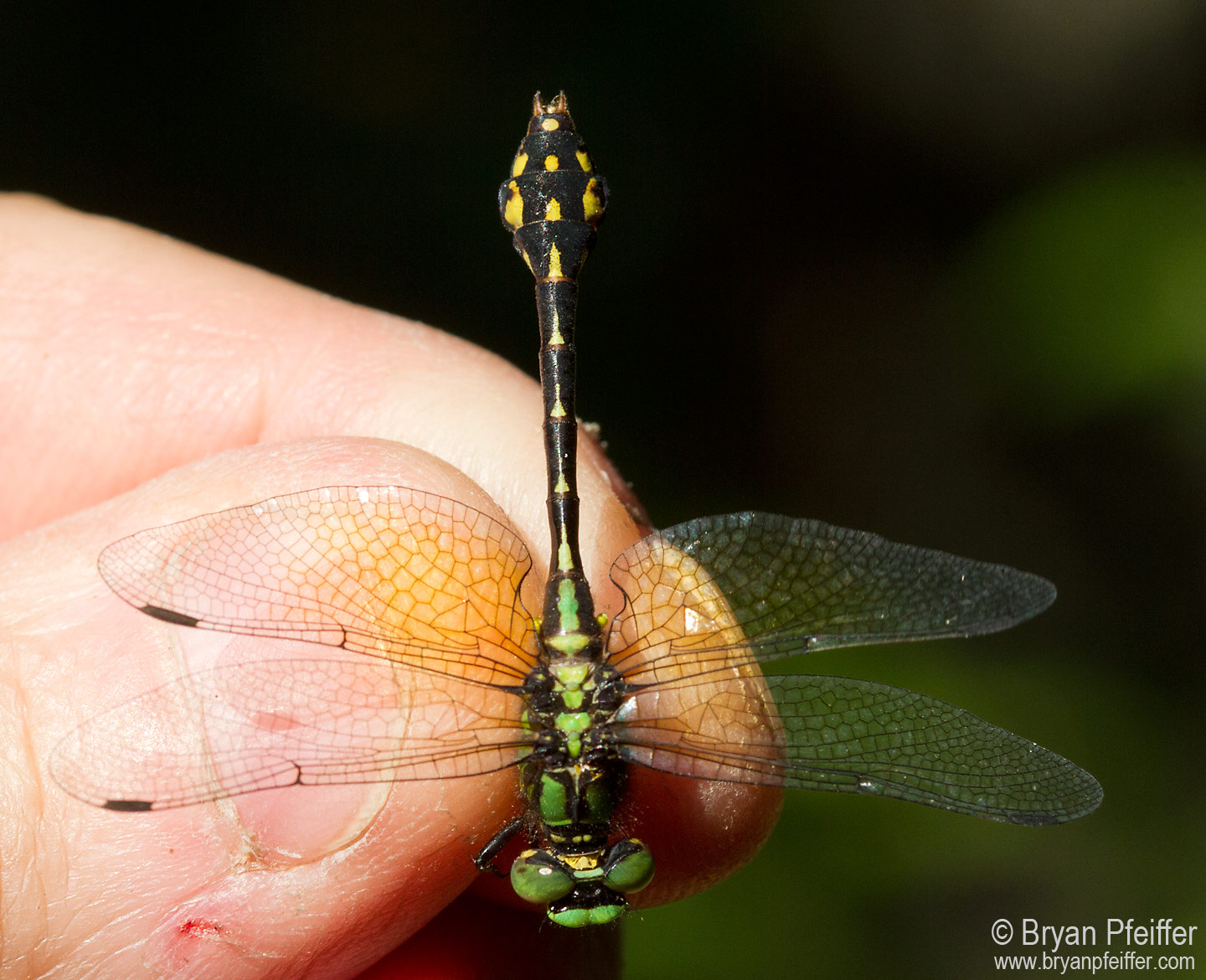 The smallest snaketail, Pygmy Snaketail (Ophiogomphus howei) ranks among our biggest prizes — and among the most sought dragonflies on the continent. Find the pygmy on clean, big and moderate-sized rivers, where it often flies with other Ophio species. Catching one to confirm what you’ve got is a challenge. So your best bet it so search riverbanks for exuviae.
The smallest snaketail, Pygmy Snaketail (Ophiogomphus howei) ranks among our biggest prizes — and among the most sought dragonflies on the continent. Find the pygmy on clean, big and moderate-sized rivers, where it often flies with other Ophio species. Catching one to confirm what you’ve got is a challenge. So your best bet it so search riverbanks for exuviae.
Conservation Status
State: SNA
Global: G3
EXPECTED Flight Period
June – July
NOTES FROM THE MICHIGAN NATURAL FEATURES INVENTORY
The best time to survey for pygmy snaketails in Michigan is from mid-June to mid-July when the larvae leave the water to undergo their final molt and emerge as flying adults (Mead 2003, Gibbs et al. 2004). Adult emergence also can occur earlier (e.g., late April, May, and early June), particularly in other parts of the species’ range (Shiffer 1985, Needham et al. 2000) and dependent upon seasonal variations from year to year (Mead 2003). Emergence typically occurs between 0600 and 1400 hours (Gibbs et al. 2004). The easiest way to survey for this species is to look for exuviae (shed, cast skin of dragonfly larvae) on rocks, vegetation, woody debris, or other structures along the shore within a few feet of the water’s edge or floating on the water’s surface. Surveys for aquatic larvae also can be conducted by disturbing the substrate (e.g., kicking the substrate) and dislodging organisms into an aquatic sampling net.Surveys for adults of this species also can be conducted during and after the emergence period although they may be difficult to observe because they tend to spend a great deal of time in vegetation high above the water (Shiffer 1985, Smith 1999, Dunkle 2000). Adults of this species tend to be most active during late morning and early to mid-afternoon (Dunkle 2000, Mead 2003). Also, because dragonflies require warm conditions for activity and efficient metabolism, they generally are active on warm, sunny days (i.e., air temperature of 65o F or higher) but become less active and seek cover on cool, cloudy days (Dunkle 2000, Mead 2003). They also are less active and seek cover on hot, sunny days to avoid overheating (Mead 2003).
Habitat: This is an uncommon species that is known to be found in Wisconsin and along the east coast from West Virginia to Maine, especially along Appalachian Mountains. Pygmy snaketails like clean big rivers with clear, fast-moving water and gravel/sand bottoms. They are rarely found in small rivers. It also seems that they cannot breed below dams due to the altered habitat conditions. In Wisconsin, it has been infrequently found in northern counties.






